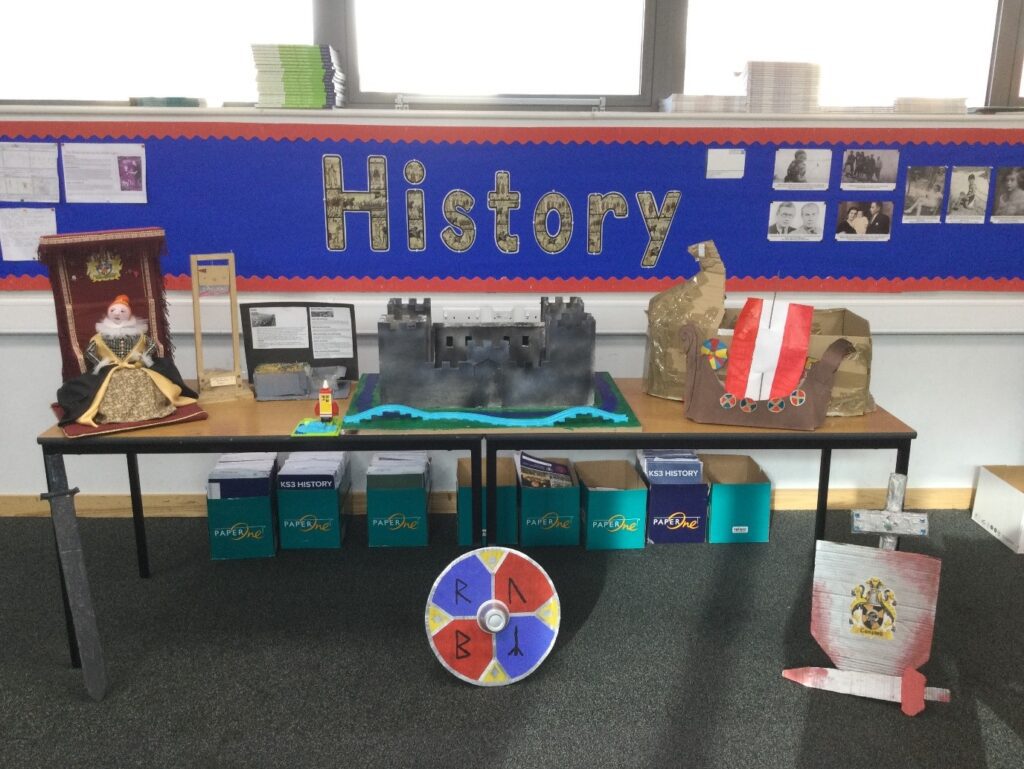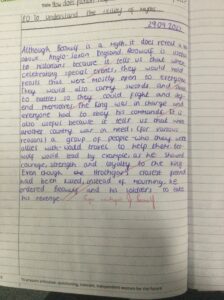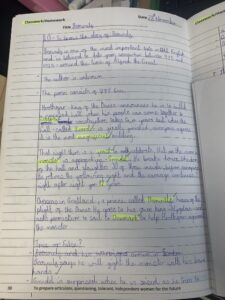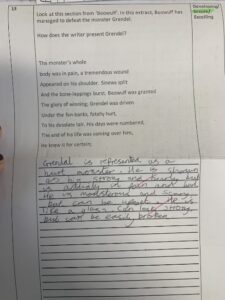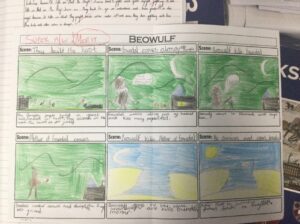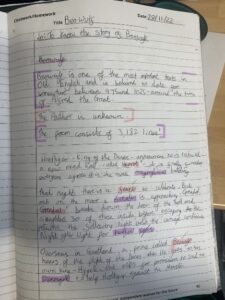Over two days during the STEM Festival, Year 8 students went on a visit to Helmshore Textile Museum in East Lancashire, organised by the History Department. The visit was timed to coincide with the STEM Festival, highlighting the scientific and technological innovations in textiles manufacture that took place here in the North West around two centuries ago. The weather was perfect for it; damp and cold, yet bright and sunny. On arrival we were met by our enthusiastic and friendly guides for the day, one of whom was a lovely medical support dog called Cerebus, though admittedly its owner did all the talking!
The students were split into four groups and went off to take part in series of hands-on activities. They learned how the town of Helmshore gradually developed from a few scattered cottages where the spinners and weavers lived and worked; turning the wool from the local sheep into a high quality woollen cloth, through to the move into a purpose-built mill complex that eventually centred on cotton cloth production. Incidentally, the process of turning wool into cloth is both fascinatingly complex and rather disgusting, involving a lot of human urine (erm, we’ll stop there).
A short walking tour introduced students to the quaint little town of Helmshore, where you can still see the church, old pub, shop and mill workers’ cottages, all built by the mill-owning Turner family. The students were shocked to learn that the workers were paid wages in the form of special tokens that they could only spend in the mill owner’s shop, buying goods at inflated prices and of course, adding to Mr Turner’s profits. Unsurprisingly, it was this practice, common across the North West, that would eventually give birth to the Cooperative movement, where local food producers and shop owners cooperated to ensure that goods were produced and sold at fair prices to the workers. Something to reflect on the next time you pop into your local Co-op!
The undoubted highlight of the visit to the mill is seeing, hearing and feeling the old machines in action. Helmshore is blessed with some of the finest examples of Industrial Revolution-era textile machinery in the world, including a full floor of Spinning Mules that can spin miles of cotton thread per minute. I saw open-mouthed students look on, a little nervously at first, as the mechanical monsters clanked and groaned into life, making the floor shake as they rumbled back and forth. It’s a barrage upon the senses that never fails to impress, and one that won’t be quickly forgotten by the students.
I want to thank all the staff who accompanied on me on the visit, as well as the office staff who helped me to organise it, and finally to the students themselves. They were a credit to PGHS and were commended by the museum staff for their good manners and genuine curiosity.
Mr Ramsdale
Senior Assistant Headteacher
















